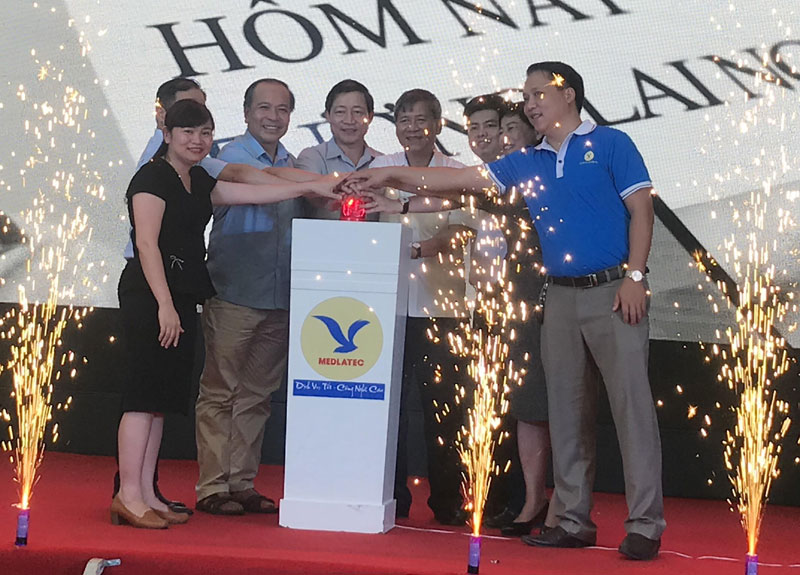


 Mr. Bui Van Cuu, the Vice Chairman of the People's Committee
of the province and Professor, the Hero of Labor Nguyen Anh Tri pressed the
start button for the Gala to start screening and managing thalassemia in Hoa
Binh province.
Mr. Bui Van Cuu, the Vice Chairman of the People's Committee
of the province and Professor, the Hero of Labor Nguyen Anh Tri pressed the
start button for the Gala to start screening and managing thalassemia in Hoa
Binh province.
At the program, 20 officials and doctors of MEDLATEC Hospital under the professional guidance of the Professor, the Hero of Labor Nguyen Anh Tri, the Chairman of Thalassemia Association in Vietnam collaborated with the Provincial General Hospital to carry out screening and selecting free thalassemia treatment for 2,000 Hoa Binh residents with a cost of 3 billion VND. Specifically, people are allowed to perform screening tests including the total blood cell analysis, the serum iron determination, the quantitative Ferritin determination. At the same time, the knowledge of thalassemia is provided before testing and counseling after the results are available.
Currently, the number of people suffering from thalassemia is increasing. It is estimated that over 12 million people carrying the disease genes throughout the country, of which Muong ethnic minority people account for 41.4%. Each year more than 2,000 people with thalassemia must be treated throughout their life. For every 8,000 babies born with the disease gene, ¼ of them are severely ill. While the average cost of treatment for a severe patient from birth to age 30 is about 3 billion VND.
Making a speech at the program, the Vice Chairman of the People's Committee of the province has emphasized that thalassemia is a dangerous genetic disease that cannot be cured but it can actively be screened and prevented early by blood tests. Therefore, screening and managing the disease plays a very important role and it is necessary to pay more attention to implement it more effectively in the future. We hope that this meaningful program will receive the response from the people to contribute to the screening of thalassemia in the area.